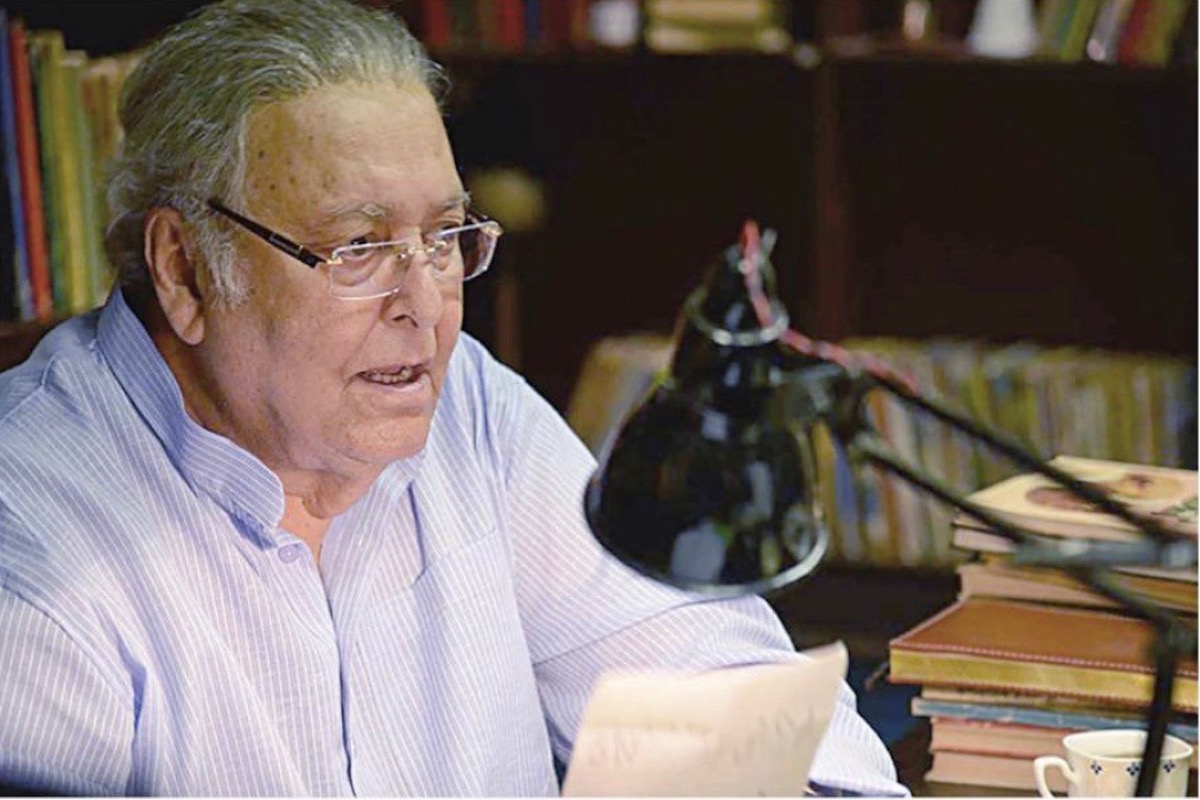Down the celluloid lane of two Bengali icons
The Statesman gets an insider’s view into an author’s mind.
He was a simple, straightforward person who wore his fame lightly without the slightest snobbery, he didn’t know what pomposity is. Although I knew him slightly, I came to know him rather closely when he readily agreed to release my first book in Bengali, Sristi O Kristi. There was an instant chemistry.

Soumitra Chatterjee
Soumitra Chatterjee was a man of renaissance, rare in today’s highly specialised small worlds of restricted boundaries. His personality and perception had enjoyed a vast perimeter. Soumitrababu, as we all know, started his career with theatre, translating difficult plays from English to Bengali and performing in relatively unknown theatre houses in Calcutta, especially north Calcutta. His first break came when Sishir Bhaduri spotted him and of course his debut in cinema with Satyajit Roy directing Apur Sangsar overnight made him a star. The rest is history. He was much more than a renowned actor, he was, at heart, a lively, passionate intellectual of great depth with wide and varied interests.
He was a simple, straightforward person who wore his fame lightly without the slightest snobbery, he didn’t know what pomposity is. Although I knew him slightly, I came to know him rather closely when he readily agreed to release my first book in Bengali, Sristi O Kristi. There was an instant chemistry.
I with a touch of careless humour suggested that the battered case he was carrying to Madras in the famous cinema of Satyajit Roy’s “Charulata” was rather small for such a trip. He immediately quipped and with a brilliant humour said to the audience “I shall share with you a secret – the battered suitcase was empty”. The house roared. From that evening onwards our friendship grew closer.
Advertisement
Seven years ago, I established the Tagore Centre for Natural Sciences and Philosophy with the help of the Bengal Government at Rabindra Tirtha. Soumitra Chatterjee was always with us. He was thrilled, as if he has found a longlost jewel, buried in the dust of history. That was on the inaugural day of the Centre. It was abundantly clear from his speech delivered at the Bose Institute. This is the Soumitra very few are aware of, a man of great culture soaked in the best tradition of Bengal renaissance.
Our friendship developed to that of kindred spirits, of heightened sensitivity. On another occasion, the performance presented by him with his daughter Paulomi and others at the Bose Institute, with the recitation of “Debator Gras” by him still stirs one’s soul.
The Rabindrasangeet rendered by Mohon Singh and Soumitra Chatterjee’s recitation at the Bose Institute, the temple of science established by Acharya Jagadish Chandra Bose, created an overwhelming ambiance, laced with the nostalgia of the Bengal renaissance.
There he was, a world famous thespian, a great hero of Bengal cinema, an actor with a mind of a poet and a flair for painting and I, a mere scientist in the corridors of a laboratory. But what a chemistry!
I last talked to him on 2 October when he rang to say he could not come to my home for a discussion on Einstein and Rabindranath’s dialogue to be performed in the month of March at an international conference I am organising. He rang to say that he could not come to my home as he had fever.
This is the first time he declined and clearly the last time!
After he had been a few weeks at the hospital I felt quite depressed, with the hope of his revival receding rapidly. When it actually happened, I felt I have lost not just a near one, but a very precious one; I will miss him sorely. The intense friendship we developed is now part of my past, like so many others. But this loss is very different, the deep wound it has created will take a very long time, if at all, to heal.
I hope the friendship that we had – so rare, so rich, so brilliantly reciprocating – will shine like a pole star in my memory as long as I am around.
The writer is NSA Senior Scientist & former Homi Bhabha Professor, DAE, and former Director, Saha Institute of Nuclear Physics & Variable Energy Cyclotron Centre.
Advertisement